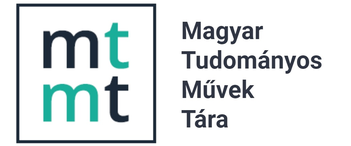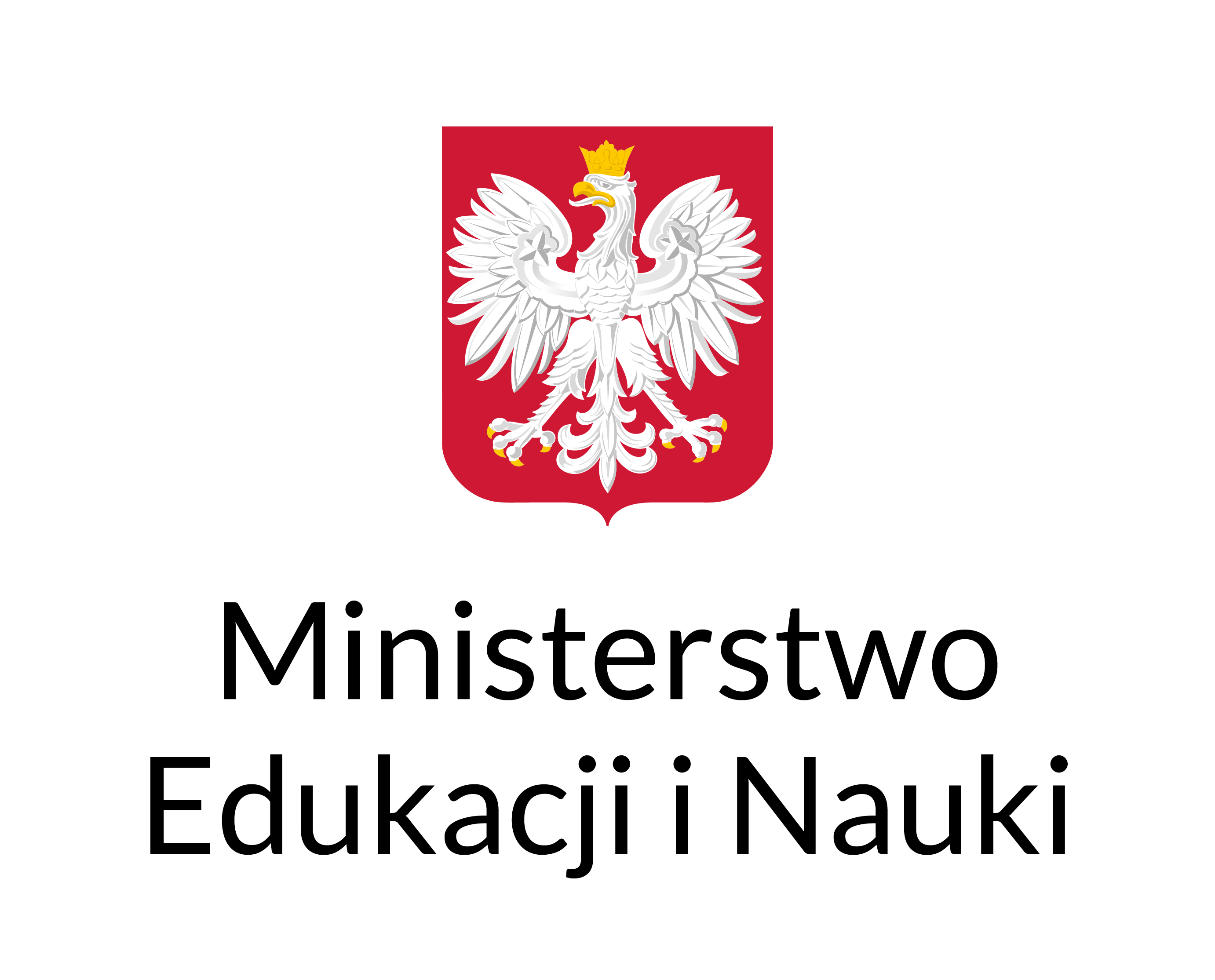Environment or (Collective) Human Rights: What Is More Important?
A Critical Perspective on the Implementation of the Joint UNESCO/ICOMOS/IUCN Recommendation on the Voluntary Relocation of Maasai Residents from the Ngorongoro Conservation Area in Tanzania
Abstract
This article reflects on the ‘Yellowstone model’ of environmental conservation while considering the United Nations Educational, Scientific and Cultural Organization (UNESCO)/ International Council of Monuments and Sites /International Union for Conservation of Nature’s recommendation on the voluntary relocation of Maasai residents from the Ngorongoro Conservation Area (NCA) in Tanzania. While advocating for an inclusive conservation approach, it synthesizes the extent to which the relocation has affected the collective socioeconomic and cultural rights of the Maasai in the property. It discusses the concept of Yellowstone conservation model, and subsequently traces the legal background to the existence of the Maasai in the NCA. The NCA’s statuses as a UNESCO heritage site of outstanding universal value, international biosphere reserve, and a global geo-park are also canvassed in the light of multiple-land use model. It further critically discusses the practical impacts of controlling the growing Maasai population at the site through induced voluntary relocation. The authors have drawn lessons from the Inter-American human rights system on the same area of conservation. Ultimately, the article concludes with practical recommendations and proposed issues for further research on this controversial topic.
References
African Commission on Human and Peoples’ Right (ACHPR) and International Work Group on Indigenous Affairs (IWGIA) (2005) ‘Report of the African Commission’s Working Group of Experts on Indigenous Populations /Communities’, Copenhagen: Eks/Skolens Trykkeri.
African Commission on Human and Peoples’ Rights (2022) ‘Urgent Call for Cessation of the Eviction of the Masai Community in the Ngorongoro District in the United Republic of Tanzania’ dated 13 June 2022 [Online]. Available at: https://www.achpr.org/pressrelease/detail?id=639 (Accessed: 9 August 2022).
Amin, A. (2021) ‘The Potential of African Philosophy in Interpreting Socio-economic Rights in the African Charter on Human and Peoples’ Rights’, African Human Rights Yearbook, 2021(5), pp. 23–51.
Bellini, J. (2008) ‘Broken Promise-What Price our Heritage?’ [Online]. Available at: https://pubs.iied.org/sites/default/files/pdfs/migrate/12546IIED.pdf (Accessed: 8 August 2022).
Charnley, S. (2005) ‘From Nature Tourism to Ecotourism? The Case of Ngorongoro Conservation Area, Tanzania,’ Human Organization, 64(1), pp. 75–88.
Coast, E. (2006) ‘Maasai Marriage: A comparative study of Kenya and Tanzania’, Journal of Comparative Family Studies, 37(3), pp. 1–34 [Online]. Available at https://www.academia.edu/1829095/Maasai_marriage_a_comparative_study_of_Kenya_and_Tanzania (Accessed: 19 December 2022).
Dersso, S. A. (2006) ‘The Jurisprudence of the African Commission on Human and Peoples’ Rights with Respect to Peoples’ Rights,’ African Human Rights Law Journal, 6(2), pp. 358–381.
Fimbo, G. M. (2004) Land Law Reforms in Tanzania. Dar-es-Salaam: Dar-es-Salaam University Press.
Gastorn, K. (2008) The Impact of Tanzania’s New Land Laws on the Customary Land Rights of Pastoralists: A Case Study of Simanjiro and Bariadi Districts. Münster: LIT.
Goldman, M. J. (2011) ‘Strangers in Their Own Land: Maasai and Wildlife Conservation in Northern Tanzania’, Conservation and Society, 9(1), pp. 65–79.
Haulle E., Njewele D. (2016) ‘Fertility Myth of Oldoinyo Lengai and its Impacts to the Maasai Community of Northern Tanzania’, Journal of the Geographical Association of Tanzania, 2(36), pp. 21–34. [Online]. Available at: https://jgat.udsm.ac.tz/index.php/jgat/article/view/143/108 (Accessed: 10 July 2022).
International Council of Monuments and Sites and the International Union for Conservation of Nature. (2017) Report of the Advisory Mission to Ngorongoro Conservation Area (United Republic of Tanzania). Paris: UNESCO.
International Work Group for Indigenous Affairs (IWGIA) (2013) Tanzanian Pastoralists Threatened: Evictions, Human Rights Violations and Loss of Livelihoods Report. East Africa: IWGIA, PINGO’s Forum, PAICODEO and UCRT.
International Working Group on Indigenous Affairs (2022) ‘Urgent Alert: Threats of forced eviction of the Maasai indigenous pastoralists of the Ngorongoro Conservation Area (NCA) and Ngorongoro District in Tanzania dated 23 February 2022’ [Online]. Available at: https://www.iwgia.org/en/resources/publications/4606-urgent-alert-maasai-ngorongoro-tanzania-forced-eviction.html (Accessed: 9 August 2022).
Kabourou, A.W. (1988) ‘The Maasai Land Case of 1912: A Reappraisal’, Trans African Journal of History, 1988(17), pp. 1–20.
Kamanga, K. C. ‘’Treaty Constipation’ As a Key Factor in Implementation of Human Rights Treaties in Kenya, Tanzania and Uganda’ pp. 1–22. [Online]. Available at: https://www.academia.edu/13587731/Treaty_Constipation_As_a_Key_Factor_in_Implementation_of_Human_Rights_Treaties_in_Kenya_Tanzania_and_Uganda. (Accessed: 20 July 2022).
Kannowski, B., Steiner, K. (eds.) (2021) RegionalHuman Rights, International and Regional Human Rights: Friends or Foe? Baden-Baden: Nomos.
Kidd, M. (2008) Environmental Law. Cape Town: Juta & Company Ltd.
Kriesel, J. (2020) Peoples’ Rights: Gruppenrechte im Völkerrecht. Theorie und Praxis des kollektiven Menschenrechtsschutzes in Afrika, Amerika und Europa. Tübingen: Mohr Siebeck.
Laltaika, E. (2013) ‘Pastoralists’ Right to Land and Natural Resources in Tanzania’, Oregon Review of International Law, 15(1), pp. 43–61.
Laltaika, E. (2020) ‘Natural Resource Extraction and Implementation of International Human Rights Obligations,’ Tuma Law Review, 6 (1&2), pp. 20–49.
Lissu, T. (2000) ‘Policy and Legal Issues on Wildlife Management in Tanzania’s Pastoral Lands: The Case Study of the Ngorongoro Conservation Area,’ Social Justice and Global Development (LGD) [Online]. Available at: http://www2.warwick.ac.uk/fac/soc/law/elj/lgd/2000_1/lissu/ (Accessed: 7 June 2022).
Madsen, A. (2000) The Hadzabe of Tanzania: Land and Human Rights for a Hunter-Gatherer Community. Copenhagen: IWGIA.
Maelezo, Tv. (2022) ‘The Truth About Loliondo Game Controlled Area and Ngorongoro Conservation Area’ [Online]. Available at: https://www.youtube.com/watch?v=GMGMoQXW16w&t=12s (Accessed: 11 August 2022).
Marinkás, Gy. (2013) ‘The Right of the Indigenous People to their Ancient Lands in the Jurisprudence of the Inter-American Court, with Special Regard to the Mayagna (Sumo) Awas Tingni and the Saramaka People Cases’, in Conferinta Studenteasca Anuală ‘Nicolae Titulescu 2013. Bukarest: Universul Juridic, pp. 922–929.
Marinkás, Gy. (2016) ‘Cultural Rights as a Tool of Protecting the Rights of Indigenous Peoples’ in Szabó, M., Varga, R., Láncos, P. L. (eds.) Hungarian Yearbook of International Law and European Law 2015. The Hague: Eleven International Publishing, pp. 15–38.
Mchome, S. E. (2001) The Problem of Using Law by Government Officials in Support of the Course of Development: A Case Study of Mkomazi Game Reserve and Kazimzumbwi Forest Reserve. (Doctorate Thesis). Dar es Salaam: University of Dar-es-Salaam.
Ministry of Information, Culture, Arts and Sports (2015) Information, Culture, Arts and Sports Statistics Report, Dar-es-Salaam. [Online]. Available at: https://www.nbs.go.tz/index.php/en/other-statistics/296-information-culture-arts-and-sports-statistics-report-2015-tanzania-mainland (Accessed: 7 July 2022).
Ministry of Natural Resources and Tourism (2019) Final Report on the Multiple Land Use Model of the Ngorongoro Conservation Area: Achievements and Lessons Learnt, Challenges and Options for the Future [Online]. Available at https://www.oaklandinstitute.org/sites/oaklandinstitute.org/files/pdfpreview/mlum-final-oct-2019.pdf (Accessed: 31 July 2022).
Mramba, S. J. (2020) ‘Environmental Protection and the Law in Tanzania: A Critical Review of Salient Principles’, Zanzibar Yearbook of Law, 2020(10), pp. 3–32.
Mwananchi Digital (2022) ‘Serikali Haihamishi Mtu Loliondo’ [The Government is Not Evicting Anyone from Loliondo] [Online]. Available at: https://www.youtube.com/watch?v=DeXi7H4PBnc (Accessed: 9 August 2022).
Ndahinda, F. M. (2011) Indigenousness in Africa: A Contested Legal Framework for Empowerment of Marginalized Communities. The Hague: T.M.C. Asser Press.
Ngorongoro Conservation Area Authority (no date) ‘Community Services’ [Online]. Available at: https://www.ncaa.go.tz/pages/community-service (Accessed: 17 July 2022).
Ngorongoro Conservation Area (no date) ‘Economic Empowerment’ [Online]. Available at: https://www.ncaa.go.tz/pages/economic-empowerment (Accessed: 19 July 2022).
Ngorongoro Conservation Area (no date) ‘The Ngorongoro Lengai UNESCO Global Geopark’ [Online]. Available at: https://www.ncaa.go.tz/pages/geopark (Accessed: 7 August 2022).
Okuly Digital (no date) ‘Kwa sababu Hizi Ni Muhimu kwa Wakazi wa Ngorongoro Kuhamia Msomera’ [Reasons for Ngorongoro Residents to Relocate to Msomera] [Online]. Available at: https://www.youtube.com/watch?v=k4UnXIxHAiE (Accessed: 8 August 2022).
PINGOS Forum (2022) ‘Tamko Toka Mashirika Yasiyo ya Kiserikali Kuhusu Mgogoro wa Ardhi Wilaya ya Ngorongoro’ [Joint Statement of the Non-governmental organsiations regarding land conflict in Ngorongoro District] [Online]. Available at: https://pingosforum.or.tz/tamko-toka-mashirika-yasiyo-ya-kiserikali-kuhusu-mgogoro-wa-ardhi-wilaya-ya-ngorongoro/ (Accessed: 10 August 2022).
Poirier, R., Ostergren, D. (2002) ‘Evicting People from Nature: Indigenous Land Rights and NationalParks in Australia, Russia, and the United States’, Natural Resources Journal, 42(2), pp. 331–351.
Raisz, A. (2008) ‘Indigenous Communities before the Inter-American Court of Human Rights: New Century, New Era?’, Miskolc Journal Of International Law, 5(2), pp. 35–51.
Shivji, I. G., Kapinga, W. B. (1998) Maasai Rights in Ngorongoro, Tanzania. Nottingham: International Institute for Environment (IIED) and HAKI ARDHI.
Tanzania National Parks (no date) ‘Serengeti National Park’ [Online]. Available at: https://storymaps.arcgis.com/stories/da3c674bdcc44265af0d5e85d8403583 (Accessed: 9 July 2022).
UNESCO/ICOMOS/IUCN (2012) Reactive Monitoring Mission to Ngorongoro Conservation Area (Tanzania). Paris: UNESCO.
UNESCO World Heritage Centre (1986) ‘IUCN Mission Report: Ngorongoro Conservation Area’ [Online]. Available at: https://whc.unesco.org/en/documents/138556/ (Accessed: 22 July 2022).
UNESCO World Heritage Centre (2007) Report of the Reactive Monitoring Mission. Paris: UNESCO.
UNESCO World Heritage Centre (2008) Report of the Reactive Monitoring Mission to the Ngorongoro Conservation Area. Paris: UNESCO.
UNESCO World Heritage Centre (2011) ‘State of Conservation, Ngorongoro Conservation Area: Conservation Issues Presented to the World Heritage Committee’ [Online]. Available at: https://whc.unesco.org/en/soc/378n (Accessed: 27 July 2022).
UNESCO World Heritage Centre (2019) Report of the Joint WHC/ICOMOS/IUCN Mission to Ngorongoro Conservation Area, United Republic of Tanzania.
UNESCO World Heritage Centre (2022) ‘News, Ngorongoro: UNESCO has Never at Any Time Asked for the Displacement of the Maasai People, dated 21 March 2022’ [Online]. Available at: https://whc.unesco.org/en/news/2419 (Accessed: 10 August 2022).
UNESCO World Heritage Centre ‘Ngorongoro Conservation Area’ [Online]. Available at: https://whc.unesco.org/en/list/39/ (Accessed: 4 August 2022).
UNESCO World Heritage Centre ‘State of Conservation (SOC 1986), Ngorongoro Conservation Area (United Republic of Tanzania): Conservation issues presented to the World Heritage Committee in 1986’ [Online]. Available at: https://whc.unesco.org/en/soc/1546 (Accessed: 24 July 2022).
UNESCO World Heritage Centre ‘The Centre’ [Online]. Available at https://whc.unesco.org/en/world-heritage-centre (Accessed: 1 August 2022).
UNESCO World Heritage Committee (2006) ‘State of Conservation Reports of Properties Inscribed on the World Heritage List’, WHC-06/30.COM/7B. [Online]. Available at: https://whc.unesco.org/en/documents/6529 (Accessed: 20 August 2022).
UNESCO World Heritage Centre ‘World Heritage’ [Online]. Available at: https://whc.unesco.org/en/about (Accessed: 1 August 2022).
UNESCO (2015) UNESCO Country Programming Document. Paris: UNESCO.
UNESCO. ‘Oldonyo Murwak.’ Available at: https://whc.unesco.org/en/tentativelists/848/ (Accessed: July 9, 2022).
UNESCO. ‘UNESCO Geoparks: Ngorongoro Lengai UNESCO Global Geopark (Tanzania).’ Available at: https://en.unesco.org/global-geoparks/ngorongoro-lengai (Accessed: July 9, 2022).
UNESCO. ‘UNESCO in Brief.’ Available at: https://www.unesco.org/en/brief (Accessed: August 2, 2022).
United Nations Permanent Forum on Indigenous Issues (2022). ‘Statement by the Chairperson of the Permanent Forum on the Eviction of Maasai people from the Ngorongoro Conservation Area in Tanzania dated 14 June 2022.’ Available at:https://www.un.org/development/desa/indigenouspeoples/news/2022/06/statement-by-the-chairperson-of-the-un-permanent-forum-on-indigenous-issues-with-reference-on-the-eviction-of-maasai-people-from-the-ngorongoro-conservation-area-in-tanzania/ (Accessed: August 9, 2022).
Wanitzek U., Sippel H. (1998) ‘Land Rights in Conservation Areas in Tanzania’, GeoJournal, 46(2), pp.113–128.
Watetezi Tv. (2022)‘Msimamo wa Malaigwanani Kuhusu Ngorongoro;Watoa Tamko Zito’ Unofficial English Translation: (‘The Position of the Laigwanans regarding Ngorongoro; They Have Issued a Serious Statement’). Available at:https://www.youtube.com/watch?v=e7AxLljn7hE (Accessed: August 10, 2022).
World Heritage Centre, International Council of Monuments and Sites and the International Union for Conservation of Nature and Natural Resources. (2012) Report on the Joint WHC/ICOMOS/IUCN Mission to Ngorongoro Conservation Area, (United) Republic of Tanzania. Paris: UNESCO.
World Heritage Centre, International Council of Monuments and Sites and the International Union for Conservation of Nature and Natural Resources. (2019) Report of the Joint WHC/ICOMOS/IUCN Mission to Ngorongoro Conservation Area, United Republic of Tanzania. Paris: UNESCO.
World Heritage Centre. ‘Ngorongoro Conservation Area.’ Available at: https://whc.unesco.org/en/list/39/ (Accessed: August 5, 2022).
Wuerthner, G. (2015) 'Yellowstone as Model for the World' in Wuerthner, G., Crist, E., Butler, T. (eds.)Protecting the Wild: Parks and Wilderness, the Foundation for Conservation. Washington, D.C.: Island Press, pp. 131-143.












